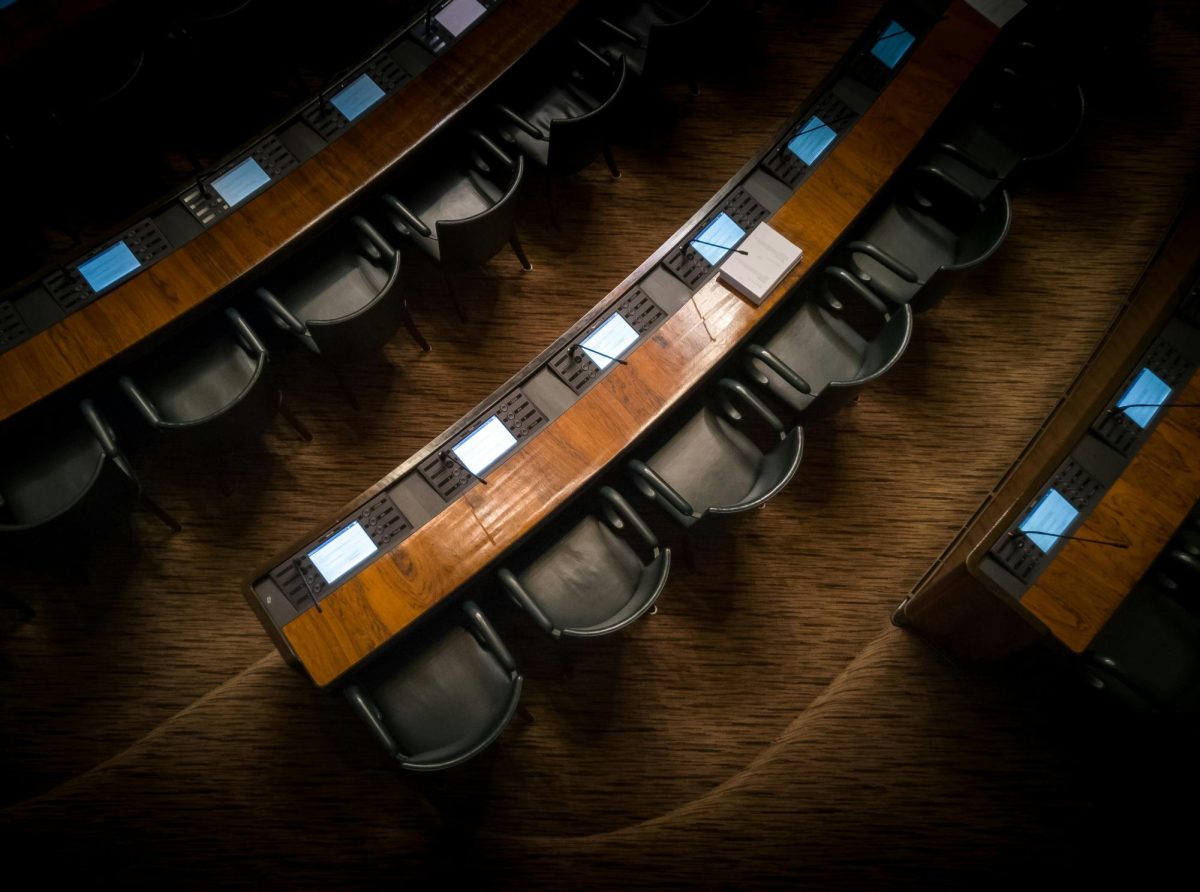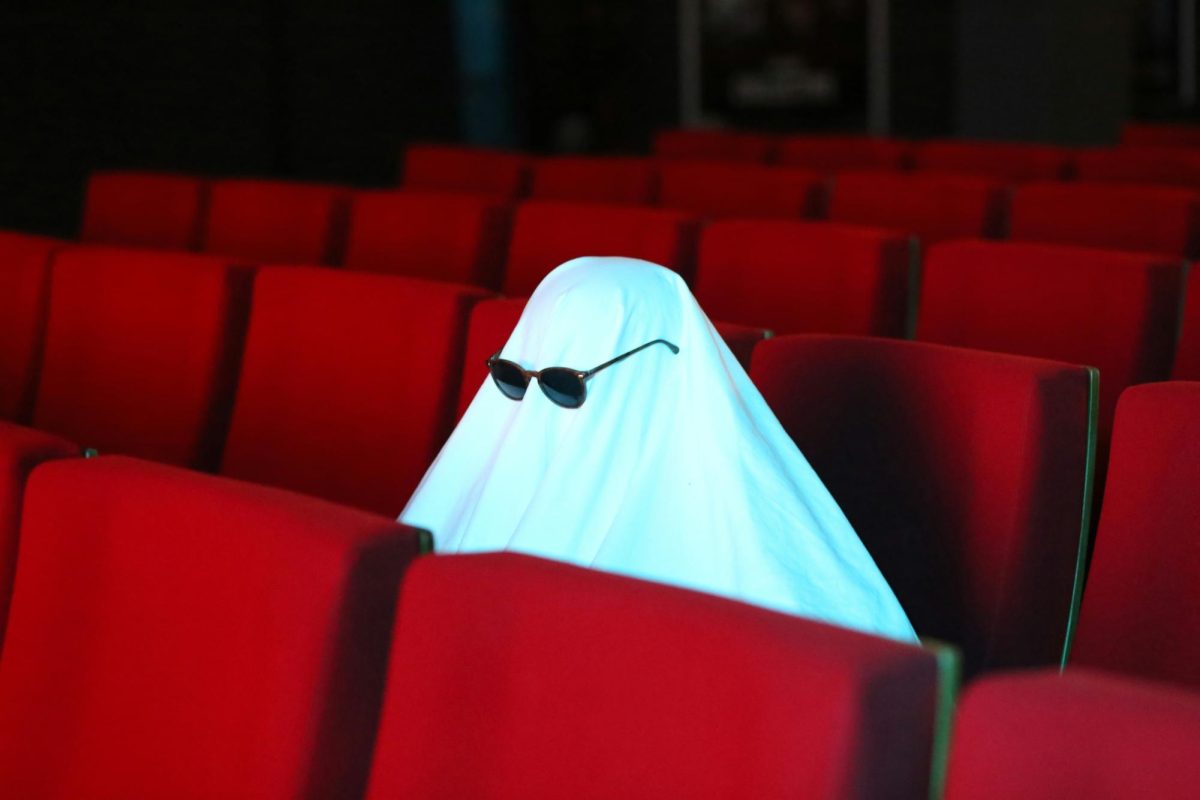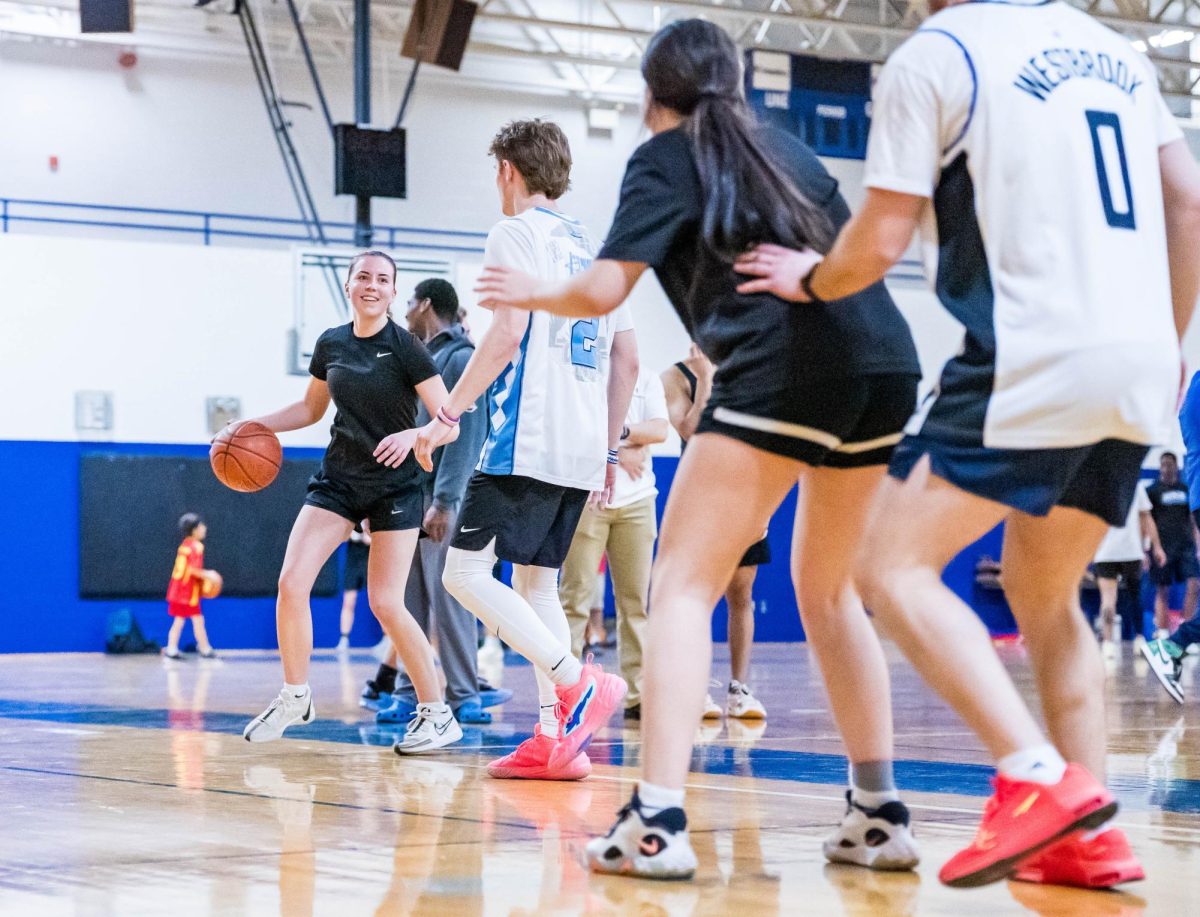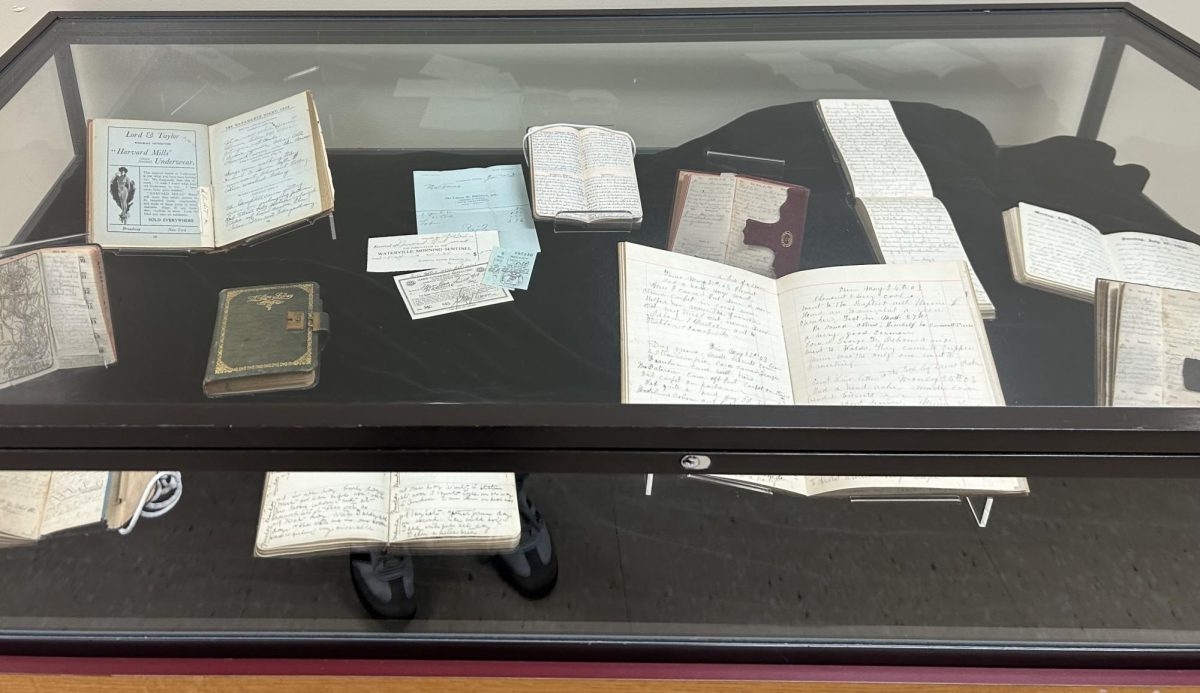When the clock strikes 10:00 p.m. or 6:00 p.m. on the weekends, a call rings out in my dorm: “The new crossword is out!” A roommate or two frantically reaches for their phones, eager to complete the Mini, a small-scale crossword that’s roughly ten clues and typically easy to finish in under three minutes. Beyond my suite, many students across this campus similarly rush to solve the miniature word game and do so again and again, day after day.

Oftentimes, larger crosswords published in other digital apps or in physical game books are chock full of references to pop culture only memorable to older generations—multiple students admitted to not having any interest in crosswords because of this. Created in 2014, The Mini, however, caters to a broader audience by making references to current culture and, well, being mini (pictured to the right). A crossword is certainly more appealing when it only requires recall, not research.
The Mini is unique to the other puzzles offered on Games since the day’s challenge releases the night before. Despite the accelerated release, the miniature crossword takes no more of the limelight than the rest of the Games. Though, with the classic word puzzle now made more palatable to the masses, how much better could it get?
So much better; the Mini is only one of the eight Times Games.
The Times also offers:
1. Sudoku, the classic game where players place numbers 1-9 into each row, column, and 3×3 mini-grid, is offered in easy, medium, and hard levels.
2. Spelling Bee is a true blast to the past—the opportunity to create nine words from a seven-letter hive, where each must contain the center, yellow letter.
3. Tiles is a visually striking game of matching overlain patterns until the board is cleared.
4. Letter Boxed is a more complex play on Spelling Bee, where wordsmiths create four words by crosshatching the letters and beginning the next word with the last letter of the previous.
5. Vertex forms a picture by connecting vertices with the appropriate amount of lines corresponding to the number in each vertex. Vertex is only available on the webpage version of Games, not on the mobile app.

6. Wordle, one of the most popular Times Games, is a six-entry guessing game of a daily five-letter word.
7. Connections is a four-chance game to correctly match four words into four predetermined categories.
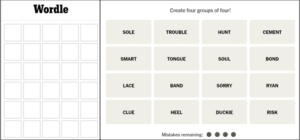
The creative masterminds behind all the games revealed to Vanity Fair that other puzzles are in the works to be added to the Games repertoire. And recently, they did just that! The New York Times released a beta game, Strands.
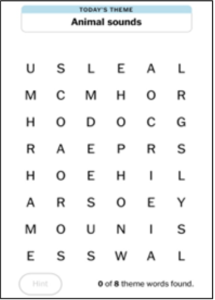
Since it is still in testing, the game is not yet available on the Games mobile app but is on the website. The challenge of this game is to find the hidden scrambled–up words connected to a daily theme in a block of letters. There are no letters left behind, and the words don’t share letters like a traditional word search might. One word is titled the “Spangram” because it spans between two opposite sides of the block of letters — this word also describes the daily theme.
According to students surveyed across campus, the next most frequently played games alongside the Mini are Wordle and Connections.
Both Wordle and Connections have people reaching extremes to complete them daily. Take Abby Tasca (Marine Biology, ’25), who admitted to changing the local time settings on her phone back to the previous day if she missed completing the games, although it’s “not to maintain a streak.” What’s most important to Tasca is not a brag-able number to prove she’s completed the puzzle every day, but rather a more personal satisfaction in accomplishing each of the brain games.
Tasca began playing Wordle and Connections last January with her boyfriend, Royce Engelhard (Marine Biology, ’25), carrying on the daily task beyond the semester and into the summer, “I continued to complete the Wordle and Connections over FaceTime with my boyfriend. I’d screen share so we could still solve it together,” she says. Over this academic year, she and Engelhard now playfully compete against her roommates over how quickly they completed the Wordle and if they solved the connections.
Tasca started her Games journey out of curiosity, as do many, but Katie Miller (Marine Biology ’26) has a different Games origin. Miller’s senior year high school English teacher had students play the Wordle in each class. She has continued to play ever since then, eventually also picking up Connections, saying that they’re a “little brain distraction” that she looks forward to every day.
When asked about how she goes about the Wordle, Miller admitted that she always starts with the word “piano” since it has multiple vowels. Anonymously, seventeen students shared their starting Wordle word on a Yik Yak survey. Many similarly used vowel-heavy words like audio, ideal, adieu (which is what I use as well), and even urine. Some opt for more common consonant-heavy words like beach, shark, and clash.
When considering the craze around these games, there’s an interesting dichotomy at play: an enhancer of cognitive function or an interrupter of focus? Games has eight puzzle games to choose from, all on one platform. It’s uber convenient to find multiple games on one platform that can be transported anywhere one goes. It then, too, is just as easy to jump from puzzle to puzzle as a means of procrastination or during a lull in class.
However, even when considering it to be a potential distractor to peak academic performance, is it truly hindering us? All these games are deemed brainteasers for a reason.
Wordle, Spelling Bee, and Letter Boxed all stimulate spelling recall. The Mini and Connections promote word association and clue deciphering. Vertex and Tiles are more visual puzzles, but no less challenging. And Sudoku, on its own, is the only numerical puzzle. Overall, students can argue that each of the Times Games are beneficial for your brain—even when playing them to relax!
Aiden Fisher (Social Work, ’25) shared that she completes the Mini and Connections right after she wakes up. “Playing the games helps me get ready for the day; it truly wakes my brain up before classes,” she said.
I know I feel less guilty about playing these games than mindlessly scrolling through social media. Admittedly, my screen time is quite concerning. Over the summer, I was reaching screen times close to ten hours, all thanks to social media platforms like TikTok and Instagram. So, when I take a break from schoolwork, not only do I put my phone back down faster after finishing the games, I feel good about solving them.
And this isn’t to encourage playing Games in the middle of lectures—professors, I apologize in advance, though I’m certain you understand the appeal; you’re the perfect audience for these brain games after all. And with a beta game in testing, the appeal of the Games doesn’t seem to be going anywhere anytime soon.
I’m certainly excited to see what more new puzzles Times has in store — bring it on Times!



